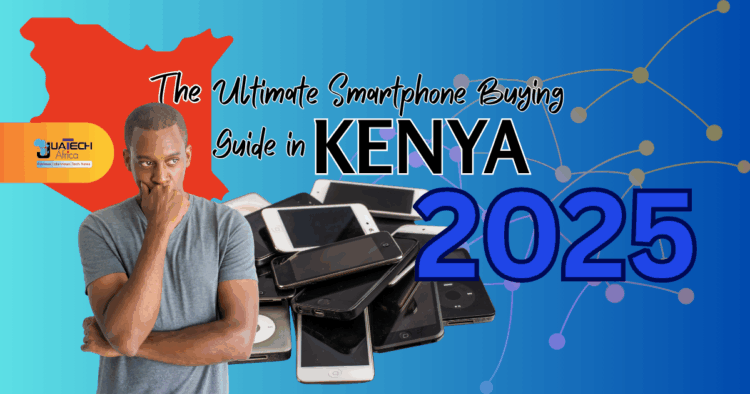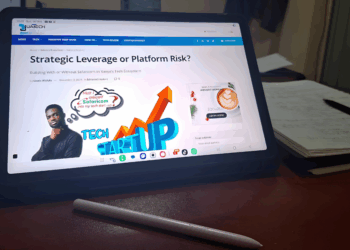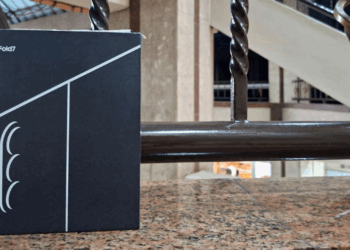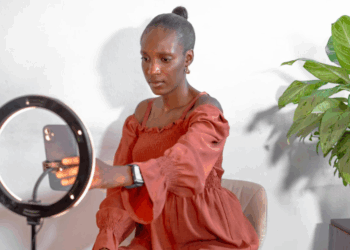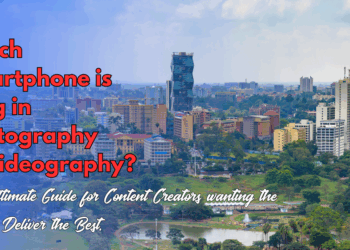Ultimate Smartphone Buying Guide Kenya 2025 is your definitive guide to choosing the perfect smartphone in Kenya—backed by data, driven by insight, and built to solve real-world problems.
1. Why This Guide Matters
In 2025, smartphones are no longer optional—they’re essential infrastructure. From M-PESA transactions to TikTok storytelling, from remote work to digital classrooms, the smartphone is the most critical device in the Kenyan household. Yet, with over 300 models flooding the market, choosing the right one can feel overwhelming.
This guide is built for you—the student, the hustler, the content creator, the small business owner, and the urban professional. It’s not just a list of specs. It’s a full-stack decision-making framework, rooted in Kenya’s unique tech landscape. Whether you’re buying cash, financing through M-KOPA, or upgrading your digital hustle, this guide will help you make a smart, confident choice.
2. Buyer Personas: Who Are You Buying For?
Understanding your needs is the first step. Here’s a breakdown of typical Kenyan buyer personas and what matters most to each.
2.1 Hustling Student
- Needs: Affordable, durable, decent camera, long battery life
- Ideal Specs: 4GB+ RAM, 64GB+ storage, 5000mAh battery, Android 13+
- Top Picks:
- Xiaomi Redmi A5 – KES 11,500
- Tecno Spark 40 – KES 13,500
- Infinix Smart 10 – KES 11,500
These phones handle WhatsApp, Zoom, and YouTube with ease. Social media use is equally decent, from capturing content to sharing across platforms. They are built for survival in dorm rooms and matatus. Considering the high likelihood of losing or damaging a handset among high school and college students, the cost is not substantial, making it easily replaceable.
2.2 Content Creator
In Kenya’s creator economy—where TikTok, Instagram Reels, and YouTube Shorts drive influence and income—your smartphone is your studio. You need cinematic video, crisp audio, vibrant AMOLED displays, and editing power that doesn’t choke under pressure.
The Samsung Galaxy A56 (KES 48,000) features a 120Hz AMOLED screen, a 50MP triple camera, and an Exynos 1280 chip—perfect for smooth transitions and high-resolution content. The Oppo Reno14 F (KES 55,000) features AI-enhanced portrait modes and ultra-fast 67W charging, making it an ideal choice for creators on the go. The Tecno Camon 40 Premier (KSh 53,500) features a 108MP sensor, 4K video, and dual front flash—ideal for low-light vlogging and beauty content. The Xiaomi Note 14 Pro Plus (KSh 48,000) features 8GB of RAM, 256GB of storage, and Dolby Vision support for creators who edit on-device.
This guide helps you invest in tools that elevate your craft—because in 2025, content isn’t casual. It’s currency.
Key Highlights
- Needs: High-resolution camera, editing power, vibrant display
- Ideal Specs: 108MP+, AMOLED screen, 8GB+ RAM, 256GB storage
- Top Picks:
- Samsung Galaxy A56 – KES 48,000
- Oppo Reno 14F – KES 55,000
- Tecno Camon 40 Premier – KES 53,500
- Xiaomi Note 14 Pro Plus: KES 48,000
2.3 Small Business Owner
Running a business in Kenya means juggling mobile payments, inventory, customer calls, and security—all from your phone. You need a device that won’t freeze during a transaction or fail before it’s completed. Dual SIM is non-negotiable. So, fingerprint unlock is used to protect sensitive data. Storage matters too—128GB ensures your apps, receipts, and photos don’t slow you down.
The Itel City 100 (KES 12,600) is a solid starter—affordable, reliable, and built for basic operations. The Samsung Galaxy A16 (KES 26,000) adds polish, speed, and brand trust. For flexible financing, the M-KOPA X20 (KES 4,000 deposit + KES 92/day) is a game-changer—offering insurance, theft protection, and peace of mind.
This guide helps you cut through noise, avoid overpriced hype, and choose a phone that works as hard as you do. Every recommendation here is tailored to your hustle—because your business deserves more than guesswork.
Key Highlights
- Needs: Dual SIM, security, productivity, financing options
- Ideal Specs: Fingerprint unlock, 128GB storage, reliable chipset
- Top Picks:
- Itel City 100: KES 12,600
- Samsung Galaxy A16 – KES 26,000
- M-KOPA X20 – KES 4,000 deposit + KES 92/day
2.4 Urban Professionals
For Kenya’s urban professionals—executives, consultants, creatives, and digital nomads—your smartphone is more than a device. It’s your mobile office, your content hub, and your gateway to productivity. You need seamless integration with smartwatches, laptops, and cloud services. You demand speed, security, and style.
The iPhone 16 Pro Max (KES 180,000–220,000) delivers unmatched synergy across Apple’s ecosystem, from FaceTime to AirDrop to iCloud.
The Samsung Galaxy S25 Ultra (KES 150,000–170,000) offers a 200MP camera, S-Pen support, and Samsung DeX for desktop-like multitasking.
Meanwhile, the Google Pixel 9 Pro (KES 135,000) offers AI-powered photography, a clean version of Android 15, and 7 years of updates.
With 5G, wireless charging, and flagship processors, these phones are built for speed and longevity. This guide helps you cut through marketing noise and invest in a device that matches your ambition, lifestyle, and digital footprint—because in 2025, performance is personal.
Key Highlights
- Needs: Premium experience, seamless ecosystem, 5G
- Ideal Specs: Flagship processor, 12GB RAM, wireless charging
- Top Picks:
- iPhone 16 Pro Max –KES180,000–220,000
- Samsung Galaxy S25 Ultra – KSh 150,000–170,000
- Google Pixel 9 Pro – KES 135,000
These are productivity beasts. They integrate with smartwatches, laptops, and cloud services. Ideal for executives, consultants, and digital nomads. With an increased emphasis on ecosystems, you are best placed with a comprehensive gadget integration that supports your chosen ecosystem, providing an unadulterated experience.
2.5 Rural User
In Kenya’s rural communities—from Magadi to villages in West Pokot—smartphones are lifelines, not luxuries. Beyond the tarmac roads, electricity, infrastructure, and shared social amenities in urban/semi-urban areas, folks in rural areas face different realities.
As a rural dweller, you must endure unreliable power, weak network signals, and limited access to repair services. For farmers, teachers, boda riders, and traders, the right phone must deliver long battery life, strong 4G connectivity, and offline usability without compromise. Even the torch is a necessity, not a luxury.
Feature Phones
Feature phones are a must-have, as a second backup phone, just in case the worst happens. Features phones include:
- Tecno T315-Kes 3,600
- Itel 2165- Kes 2,300
- Nokia 105 (2023)- Kes 105 (2023)
- Nokia 150 (2023)- Kes 6,000
- HMD Music- Kes 3,500
Budget Smartphones built for Durability
Smartphones have also become a necessity. Those that best met rural user needs include:
Itel A90 (KSh 10,300) is purpose-built for entry-level users. Its 5000mAh battery lasts two days on a single charge, and its lightweight design makes it easy to carry during long workdays. Dual SIM support ensures seamless switching between Safaricom and Airtel, even in areas with poor network coverage.
Tecno Pop 10 Pro (KSh 12,500) adds a sharper display and expandable storage—ideal for saving photos, documents, and offline videos. Its durable casing withstands dust and drops, making it perfect for outdoor work.
The Infinix Hot 60i (KSh 15,500) features a massive 6,000mAh battery and a reliable Unisoc chipset. It’s great for mobile banking, WhatsApp communication, and basic productivity apps.
Infinix Smart 10HD (KSh 9,500) is the most affordable pick, yet it delivers 4G speeds, a decent camera, and a clean Android experience. It’s ideal for students and first-time smartphone users in rural setups.
Realme C61 4G (KSh 15,000) stands out with its IP54 water resistance, 90Hz display, and clean UI. It’s a wise choice for users who want performance without bloatware, and its fast charging ensures minimal downtime.
This guide filters out urban-centric hype and highlights phones that respect rural realities—devices that last, connect, and empower rural communities. Because in Kenya’s heartland, reliability isn’t optional—it’s survival.
3. Top Picks by Category
Here’s a curated list of smartphones dominating the Kenyan market in 2025—organized by budget, use case, and financing flexibility.
3.1 Flagship Phones (KSh 120,000+)
| Model | Highlights | Price Range | Verdict |
| Samsung Galaxy S25 Ultra | 200MP quad camera, Snapdragon 8 Elite, 6.8″ AMOLED, 100W fast charge, S-Pen support | KSh 167,700 | Best for creators & execs |
| iPhone 16 Pro Max | A18 Pro chip, Super Retina XDR OLED, 48MP camera, USB-C, iOS 18 | KSh 219,300 | Best for ecosystem lovers |
| Google Pixel 9 Pro | Tensor G3, 6.7-inch LTPO AMOLED, 12GB RAM, 7 years updates, AI photography | KSh 129,000 | Best for photography purists |
These phones are productivity beasts—ideal for professionals, creatives, and anyone who demands top-tier performance, longevity, and ecosystem integration.
3.2 Mid-Range Heroes (KSh 40,000–80,000)
| Model | Highlights | Price Range | Verdict |
| Oppo Reno 14F | 50MP + 8MP + 2MP camera, AMOLED display, 6000mAh battery with 45W fast charging, sleek design | Kes 55,000 | Best for style and content, with the best AI applicability for mid-range phones. |
| Samsung Galaxy A56 | Exynos 1580, IP67 water resistance, One UI 7, 120Hz Super AMOLED 6.7-inch display | Kes 42,000–50,000 | Best for reliability and Galaxy ecosystem. A mid-range powerhouse under Kes 50,000, built for creators and professionals. It delivers flagship-grade performance, security, and AI tools like Best Face and Object Eraser—making it future-proof, stylish, and productivity-ready |
| Tecno Camon 40 Premier | Triple 50MP Camera, HiOS 15, 5G, 12GB RAM + 256GB storage | Kes 55,000 | Best for creators who want flagship-level camera versatility, intelligent post-processing, and reliable performance—without crossing the KSh 60,000 threshold. It’s built for TikTokers, YouTubers, Instagram storytellers, and mobile filmmakers who need power, polish, and precision in one device. |
Mid-range phones now offer flagship-like features—great cameras, AMOLED screens, and fast charging—without the premium price tag.
3.3 Budget Kings (KSh 15,000–35,000)
| Model | Highlights | Price | Verdict |
| Xiaomi Redmi A5 | 6.88-inch IPS, 120Hz LCD, Unisoc T7250, 4GB RAM128GB, 32MP camera, Android 15 Go, 5200mAh | Kes 11,500 | Smooth display, solid battery, and great camera for students needing performance and style on a tight budget. |
| Infinix Smart 10 HD | 6.6-inch 90Hz LCD, Android 14 Go, 4GB RAM 128GB, 13MP camera, 6000mAh, USB-C | Kes 11,800 | Big battery, clean UI, and modern design make it ideal for casual users and Gen Z multitaskers. |
| Itel A90 | 6.6-inch 90Hz LCD, Unisoc T7100, Android 14, 4GB RAM 128GB, 13MP Main Camera, 5000mAh, IP54 Waterproof Rating | KSh 12,300 | Rugged, reliable, and efficient—perfect for rural users needing endurance, signal strength, and offline usability. |
| Realme C61 4G | 6.74-inch 90Hz LCD, Unisoc T612, Android 14, 6GB RAM128GB, 50MP camera, IP54 waterproof rating 5000mAh battery | KSh 15,000 | A premium build, sharp camera, and smooth UI make it unbeatable for budget buyers seeking flagship-like finesse. |
These devices are ideal for students, first-time buyers, and rural users. They offer solid performance, long battery life, and essential features without compromise.
3.4 Financed Options
| Model | Financing Partner | Monthly Cost | Verdict |
| M-KOPA X20 | M-KOPA | KSh 92/day + KSh 4,000 deposit | Best for small biz |
| Samsung Galaxy A16 5G | EasyBuy | KSh 4,200/month | Best for urban youth |
| Tecno Spark 30C 4G | Badili | KSh 3,000/month | Best for students |
| Samsung Galaxy A06 | MoPhones | Kes 470 per week Kes 2015 per month | Best for the working class with a steady income. |
Financing options are expanding across Kenya, making smartphones more accessible. M-KOPA offers bundled insurance and theft protection. Badili enables trade-ins and refurbished deals. EasyBuy uses mobile usage data for credit scoring.
4. Where to Buy: Trusted Retail & Financing
4.1 Physical Stores
- Phone Place Kenya (Nairobi CBD): Verified stock, warranty support
- Xiaomi Certified Stores: across Nairobi, Mombasa, and Kisumu
- Safaricom Shops: Ideal for financing, bundles, and official devices
- Smartphone Store Kenya: Great for mid-range and budget picks
- Phones Stores Kenya: Refurbished mid-range and high-end smartphones.
4.2 Online Platforms
- Jumia Kenya: Flash sales, verified sellers, delivery nationwide
- Kilimall: Budget-friendly options, but verify seller ratings
- Masoko: Safaricom’s official e-commerce platform
4.3 Financing Models
- M-KOPA: Pay-as-you-go, bundled with insurance and solar options
- Badili Africa: Trade-in and refurbished deals
- EasyBuy: Monthly installments, credit scoring via mobile usage
- MoPhones: Weekly installments.
4.4 Avoiding Counterfeits
- Always check IMEI on Safaricom’s IMEI checker
- Avoid “too good to be true” deals on social media
- Ask for a sealed box, a warranty card, and an official invoice.
5. Features & Specifications that Matter in 2025
Do not get lost in jargon. Here’s what truly matters for Kenyan buyers:
5.1 Battery Life
Battery life is no longer just about capacity—it’s about endurance, speed, and smart management. In 2025, top devices offer 6000mAh batteries paired with fast charging speeds of up to 120W, allowing for a 0–70% charge in under 20 minutes. Devices with 5,000mAh or more are ideal, with at least 30W+ fast charging.
Flagships like the Galaxy S25 Ultra and Camon 40 Premier use layered cooling and silicon-carbon cells to prevent overheating and extend battery health. Budget phones like the Itel A90, S25, and Infinix Smart 10 HD still offer 5,000–6,000mAh batteries, but with slower charging speeds of 18–33W.
Look for USB-C, battery health monitors, and smart charging algorithms. For Kenyan users facing power outages, battery performance is a deal-breaker.
5.2 Display: The Window to Your Digital World
Your smartphone’s display is where every interaction begins—whether you’re editing a TikTok video, reading a WhatsApp message, or reviewing a business report. In 2025, display quality will have a direct impact on usability, comfort, and the creation of content. Kenyan buyers must look beyond marketing jargon and understand what truly matters.
AMOLED vs LCD: Know the Difference
AMOLED (Active-Matrix Organic LED) delivers deeper blacks, vibrant colors, and improved sunlight visibility. It’s ideal for outdoor use, media consumption, and creative work.
LCD (Liquid Crystal Display), while more affordable, often lacks contrast and struggles to display clearly under direct sunlight. It’s sufficient for basic tasks but less immersive.
Verdict: For content creators, professionals, and frequent outdoor users, AMOLED is worth the investment. Budget buyers can settle for LCD if media isn’t a priority.
Refresh Rate: Why Smoothness Matters
- 60Hz: Standard but feels sluggish during scrolling and gaming
- 90Hz–120Hz: Offers fluid transitions, better touch response, and reduced eye strain
- 144Hz: Found in devices like the Camon 40 Premier—ideal for creators and gamers needing ultra-smooth visuals
Verdict: Aim for at least 90Hz. It improves everything from Instagram swipes to document navigation.
Screen Size: Balance Functionality and Comfort
- 6.5–6.8 inches: The sweet spot for multitasking, media, and typing
- Below 6.3-inch display: May feel cramped for video editing or split-screen use
- Above 6.9 inches: Can be unwieldy for one-handed use, especially in matatus or fieldwork
Verdict: Choose size based on lifestyle. Creators and multitaskers benefit from larger screens; casual users may prefer compact comfort.
Pro Tips for Kenyan Buyers
- Check brightness levels: Aim for 800+ nits for outdoor readability.
- Look for Gorilla Glass or tempered protection, especially if you work in rugged environments.
- Avoid thick bezels: They reduce usable screen space and feel outdated.
- Test color accuracy: AMOLED panels vary—Samsung and Xiaomi lead in calibration.
In summary, your display isn’t just a spec—it’s your daily interface. Prioritize AMOLED, 90Hz+, and a size that fits your workflow. Whether you’re editing content, reading in the sun, or managing your business on the go, the right screen transforms your smartphone from a tool into a trusted companion.
5.3 Processor: The Engine Behind Your Experience
The processor, also known as the chipset, is the brain of your smartphone. It determines how fast your apps open, how smoothly your games run, and how efficiently your battery is used. In 2025, chipsets will integrate a CPU (for logic), a GPU (for graphics), and AI engines (for advanced features such as facial recognition and camera optimization).
Entry-level processors like MediaTek’s Helio G36 are designed for basic tasks—such as making calls, using WhatsApp, and light browsing. Mid-range chips, such as the Snapdragon 695, strike a balance between performance and efficiency, making them ideal for gaming, multitasking, and social media use. Flagship processors, such as the Snapdragon 8 Elite or Tensor G4, power high-end devices, enabling 4K video editing, advanced AI, and seamless multitasking.
You should match the processor tier to your lifestyle. A student doesn’t need flagship power, but a content creator or business owner will feel the difference. Always check for thermal management, 5G support, and software optimization.
| Tier | Example Chipset | Ideal Use Case |
| Entry | Helio G36, Unisoc T610 | Calls, WhatsApp, light browsing |
| Mid | Snapdragon 695, Dimensity 6100+ | Gaming, social media, multitasking |
| Flagship | Snapdragon 8 Elite, Tensor G4 | Content creation, 4K video, heavy apps |
5.4 Camera: What Actually Matters in 2025
In Kenya’s smartphone market, camera specs are often the most hyped—and the most misunderstood. Let’s break down what truly matters, beyond just megapixels.
Megapixels vs Sensor Quality
- A 50MP camera with a large sensor and optical image stabilization (OIS) will outperform a 108MP setup with poor software tuning.
- Example: The Google Pixel 9 Pro’s 50MP sensor delivers sharper, more balanced images than many higher-megapixel competitors, thanks to superior computational photography.
Lens Types & Use Cases
| Lens Type | Purpose | Example |
| Main (Wide) | Everyday shots | Tecno Camon 30 Premier – 108MP |
| Ultra-Wide | Landscapes, group shots | Samsung Galaxy A55 – 8MP |
| Macro | Close-ups (flowers, textures) | Infinix Zero 30 – 2MP |
| Depth Sensor | Portrait blur (bokeh) | Xiaomi Redmi Note 13 – 2MP |
| Periscope/Telephoto | Zoom without loss | Galaxy S25 Ultra – 10x optical zoom |
Video Capabilities
- Standard: 1080p at 30fps
- Mid-Range: 4K at 30fps
- Flagship: 4K at 60fps or 8K at 30fps
- Stabilization: Look for OIS or EIS to reduce shaky footage
- Example: iPhone 16 Pro Max uses sensor-shift stabilization for cinematic video
Front Camera & Selfies
- Ideal Specs: 16MP+ with AI beautification and HDR
- Best Picks:
- Oppo Reno 14F – 32MP selfie cam with portrait mode
- Tecno Camon 40 Premier – 50MP front camera with dual flash
- iPhone 16 Pro Max – 12MP TrueDepth with Face ID and cinematic mode
AI & Software Tuning
- Brands like Google, Apple, and Samsung lead in computational photography
- Features to look for:
- Night mode
- HDR+
- Scene optimization
- Portrait lighting
- Skin tone accuracy (especially important for African complexions)
Real-World Examples
- TikTok Creators: Need smooth video, good low-light, and stable footage. Best picks: Oppo Reno 14F, Pixel 9 Pro
- Business Owners: Need clear product shots and document scanning. Best picks: Samsung A36, Tecno Camon 40 Series.
- Students: Need decent selfies and class recordings. Best picks: Infinix Smart 10, Xiaomi Redmi A5, Tecno Spark 40 Pro Plus.
6. Operating Systems & Ecosystems: Android vs iOS
Choosing a smartphone isn’t just about hardware—it’s about the software experience and ecosystem you will live in for the next few years. In Kenya, where mobile-first lifestyles are prevalent, your OS choice significantly impacts everything from app compatibility to resale value.
6.1 Android 15: Versatility Meets Variety
Android 15 brings smarter AI with Gemini Assistant, Theft Detection Lock, Private Space for sensitive apps, and satellite messaging for off-grid communication. It enhances security, personalization, and usability—making Android phones in 2025 more intuitive, safer, and future-ready for Kenyan users navigating digital, financial, and remote connectivity needs.
Merits of the Android OS
Android’s strength lies in its versatility, accessibility, and ecosystem reach. It powers over 85% of smartphones in Kenya, from budget-friendly Itel and Infinix models to premium Samsung and Pixel flagships. Here’s why it continues to lead:
1. Massive Device Variety:
From entry-level phones priced at KSh 10,000 to flagships costing KSh 200,000, Android offers something for every budget and lifestyle. Whether you’re a student, a farmer, a content creator, or a CEO, there’s an Android device tailored to your needs.
2. Customization & Control
Android allows users to personalize their experience by changing launchers, widgets, themes, and even default apps. This flexibility is especially valuable for Kenyan users who want to optimize battery life, data usage, or accessibility features.
3. Seamless Google Integration
Android is deeply integrated with Google services, including Gmail, Drive, Maps, YouTube, and Google Photos. For users relying on cloud storage, navigation, and productivity tools, this ecosystem is intuitive and powerful.
4. Open Ecosystem & App Diversity
With access to millions of apps via Google Play and third-party stores like APKPure, Android supports local innovations—from M-PESA to eCitizen to county-specific apps. Developers can build regionally relevant solutions without Apple’s gatekeeping.
5. Expandable Storage & Dual SIM Support
Unlike iPhones, most Android phones offer microSD slots and dual SIM functionality—essential for Kenyan users managing multiple lines with Safaricom, Airtel, and Telkom, or storing offline media in areas with limited data availability.
6. Battery & Charging Innovation
Android OEMs lead the way in battery technology—offering 6000mAh cells, 120W fast charging, and smart power-saving modes. Brands like Tecno, Xiaomi, and Realme optimize for Kenya’s power-challenged environments.
7. Value for Money
Android delivers flagship features—such as AMOLED displays, high refresh rates, and AI cameras—at mid-range prices. Devices like the Camon 40 Premier and Galaxy A56 offer premium experiences without premium costs.
Bottom Line:
Android’s open architecture, affordability, and regional adaptability make it the most practical and empowering OS for Kenyan users. Whether you’re buying your first smartphone or upgrading to a 5G powerhouse, Android gives you choice, control, and value.
Limitations Kenyan Buyers Should Know
1. Fragmented Updates
Unlike Apple’s centralized rollout, Android updates depend on manufacturers. Budget brands like Itel, Tecno, and Infinix often delay or skip major OS upgrades, leaving users vulnerable to security risks and app incompatibility.
2. Bloatware & Pre-installed Apps
Many Android phones—especially those in the budget segment—come pre-loaded with unnecessary apps that consume storage, slow down performance, and drain the battery. Removing them isn’t always possible without rooting, which voids the warranty.
3. Inconsistent Security
Security patches vary widely. While Samsung and Google offer 4–7 years of updates, others provide only 1–2 years. This inconsistency exposes users to malware, particularly in regions with high mobile fraud rates.
4. App Optimization Issues
Not all apps run smoothly across devices. Kenyan users often experience lag or crashes on entry-level phones due to poor RAM management or outdated chipsets.
5. Too Much Choice, Not Enough Clarity
The sheer variety of Android devices can overwhelm buyers. Without trusted guidance, users may be misled by marketing gimmicks rather than focusing on actual performance.
Bottom Line:
Android’s openness is both its strength and weakness. Kenyan buyers must choose wisely—prioritizing brands with strong update policies, clean software, and proven reliability. This guide helps cut through the noise and make informed, future-proof decisions.
Best Android Experiences in Kenya:
Samsung One UI 7
Samsung’s One UI 7 blends elegance with efficiency. It’s optimized for multitasking, privacy, and battery management—making it ideal for professionals and business users. With 4+ years of OS updates and 5 years of security patches, it offers long-term reliability. Its intuitive layout and Smart Hub integrations elevate productivity across devices.
Google Pixel UI
Pixel UI delivers the purest Android experience—clean, fast, and deeply integrated with Google’s AI ecosystem. With 7 years of updates, it’s unmatched in longevity. Features like Call Screen, Magic Eraser, and real-time transcription empower creators, educators, and developers. It’s the gold standard for software stability and intelligent user experience.
Xiaomi HyperOS
HyperOS is Xiaomi’s ambitious leap into unified device ecosystems. It’s feature-rich—offering granular control, dynamic widgets, and smart device syncing. However, it demands higher RAM and storage, making it best for power users. For Kenyan tech enthusiasts, it’s a playground of customization, but only if paired with capable hardware.
6.2 iOS 18: Premium, Private, Polished
Apple’s iOS is the gold standard for consistency and longevity. Though iPhones are premium-priced, they offer unmatched software support and ecosystem integration.
iOS 18 introduces Apple Intelligence, satellite messaging, and enhanced customization options for the Home and Lock screens. It features a redesigned Photos app, smarter Mail sorting, and improved Siri interaction. With privacy at its core and 6+ years of updates, iOS 18 offers a refined, secure, and future-ready experience.
Pros of iOS (iOS 18 and beyond)
- 6 Years of OS Updates: Ensures long-term security, app compatibility, and resale value—ideal for buyers who want durability and future-proof investment.
- Superior Privacy Controls: Features like App Tracking Transparency, Mail Privacy Protection, and Face ID keep personal data secure and usage private.
- Seamless Ecosystem Integration: iPhone syncs effortlessly with MacBook, iPad, AirPods, and Apple Watch—perfect for professionals and creatives managing workflows across devices.
- Apple Intelligence (iOS 18): On-device AI for smarter Siri, writing suggestions, and image editing—without compromising privacy or relying on cloud processing.
- Consistent Performance Across Devices: iOS is tightly optimized for Apple hardware, reducing lag, app crashes, and fragmentation seen in some Android models.
Cons of iOS
- Expensive Upfront Cost: Flagship iPhones start above KSh 180,000—making them less accessible for budget-conscious buyers or first-time users.
- Limited Customization: Users can’t change default apps, launchers, or deeply personalize UI—restricting flexibility compared to Android.
- Lightning Port Still Present on Some Models: While USB-C is now on Pro models, budget variants still use Lightning—leading to slower charging and accessory limitations.
- Closed Ecosystem iOS restricts sideloading apps and third-party stores—limiting access to region-specific tools or developer flexibility.
- Compatibility Gaps with Non-Apple Devices: Integration with Windows PCs, Android wearables, or third-party accessories is limited or clunky.
Best iOS Picks in Kenya:
- iPhone 16 Pro Max: Flagship with A18 Pro chip, 48MP camera, and USB-C
- iPhone SE 2025: Budget-friendly entry into iOS (expected KSh 65,000–75,000)
6.3 Update Cycles & Longevity
| Brand | OS Updates | Security Patches | Notes |
| Samsung | 4 years | 5 years | A-series and above qualify |
| Apple | 6+ years | 6+ years | Best resale value |
| Xiaomi | 3 years | 4 years | Varies by model |
| Tecno/Infinix | 2 years | 3 years | Budget models may lag |
| Google Pixel | 7 years | 7 years | Pixel 9 series sets a new standard |
Pro Tip:
Always check the brand’s update policy before making a purchase. A phone with more extended support offers better security, app compatibility, and a higher resale value.
7. Thought Leadership: Solving Real Problems for Kenyan Buyers
Let’s address the most common frustrations Kenyan buyers face—and how to overcome them with smart, practical solutions.
7.1 “Phones are too expensive!”
Solution:
- Use M-KOPA, Badili, MKOPA, or EasyBuy to spread payments.
- Buy during Jumia Tech Week, Black Friday, or Safaricom promotions
- Buy bundled packages to maximize on discounts and freebies
- Consider refurbished models with verified warranty (Badili Africa leads here)
7.2 “I bought a fake phone!”
Solution:
- Verify IMEI on https://imei.safaricom.com before purchase
- Buy only from verified retailers—avoid Instagram sellers with no physical address
- Ask for a sealed box, a warranty card, and an official invoice.
7.3 “My phone lags and dies fast.”
Solution:
- Choose phones with 4GB+ RAM and 5000mAh battery minimum.
- Avoid Android Go unless the budget is tight.
- Use battery saver apps, uninstall bloatware, and clean storage monthly.
7.4 “I don’t know which phone fits my lifestyle.”
Solution:
- Use persona-driven recommendations in this guide;
- Match your daily apps (TikTok, Zoom, WhatsApp, M-PESA) to RAM and battery needs;
- Identify your core needs and go for the device that helps you meet these needs and adds value to you. Be specific and intentional.
- Consider resale value if you plan to upgrade in 12–18 months.
9. JuaTech Africa’s Final Verdicts: Best Phones by Category
| Category | Winner | Why |
| Best Overall | Samsung Galaxy S25 Ultra | Unmatched camera, display, and performance |
| Best Value | Tecno Camon 40 Premier | Flagship features at mid-range price |
| Best for Students | Xiaomi Redmi A5 | Reliable, affordable, and durable |
| Best for Creators | Oppo Reno 14F | AMOLED display and AI camera tuning |
| Best for Financing | M-KOPA X20 | Flexible payments, solid specs |
| Best for Professionals | iPhone 16 Pro Max | Ecosystem, longevity, resale value |
10. Final Word: Ultimate Smartphone Buying Guide Kenya 2025
This isn’t just a buying guide—it’s a strategic compass for Kenyan consumers navigating a fast-evolving tech landscape. It blends verified specs, local realities, and editorial precision to empower smarter, more confident decisions. Whether you’re upgrading, financing, or buying your first smartphone, this guide puts clarity and control in your hands.
At JuaTech Africa, we stand for truth, trust, and tech empowerment. We believe every Kenyan deserves honest insights and tools that align with their lifestyle, budget, and ambitions. So as you explore your next device—whether it’s a flagship beast or a budget workhorse—share your pick, spark the conversation, and let’s shape smarter tech choices together.
2025 is yours to own. Let this guide be your starting point. Check this article on “The Ultimate Mobile Set-up Guide for Kenyan Creators.” Stay tuned for our upcoming articles on:
“Best Accessories for Kenyan Smartphones 2025”
“How to Finance Your Next Phone in Kenya”
“Top Mobile Data Plans for Safaricom, Airtel & Faiba”.


